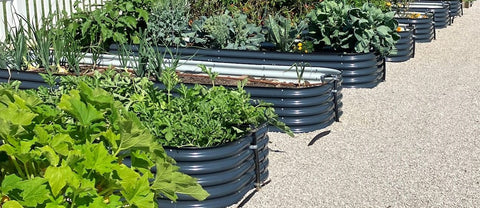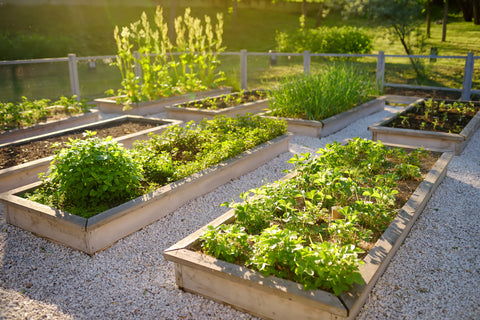Tips from Olle Garden Bed: Why Are My Seedlings Turn Yellow?
Any gardener knows the trials and tribulations of caring for young plants. They are very fragile at the beginning, and their maintenance can become frustrating. The following content also has some reference value for raised garden beds.
Seedlings need a lot of care and attention to achieve a healthy green state. You often think, "Why do my seedlings turn yellow", or "Why do my seedlings always die?
You are not alone - we understand your frustration. That's why we're here to help.
How to determine whether there is a problem with the yellow leaves on the seedlings

The first problem we need to solve is how to identify yellow seedlings.
When healthy seedling leaves change from beautiful and lush green to yellow or dark brown, your seedling has quickly turned to the worst case.
Cotyledons are the first things that germinate in the process of plant germination. Their whole purpose is to provide nutrition from seeds and start plant development.
Once the plant has more leaves, the cotyledons will wither, turn yellow and fall off because they no longer need them. In this case, yellow seedling leaves are completely normal.
Reasons for yellow seedlings
Once the cotyledons fall off, the bigger and more mature true leaves will take over the grain production of the seedlings.
You should see your leaves grow dark green. But if you find that they turn yellow or brown, you have a problem.
There are several conditions that may cause the leaves of seedlings to turn yellow.
Overwatering
Watering is the most common problem that gardeners encounter on seedlings. Wet soil does more harm than good.
When you water plants, oxygen is expelled from the soil, causing the roots to drown. This will cause the roots to rot and the leaves to turn yellow.
Lack of sunshine
One of the most important aspects of growing healthy plants is to ensure that they get enough sunlight. If you put the seedlings in a dark room or area, you can't expect them to grow into healthy green plants.
Use artificial light carefully. There is no need to waste fancy lights for the normal growth of plants; Natural sunlight is enough.
Too much sunshine
Just as too little sunshine is bad for seedlings, too much sunshine is also bad for seedlings.
If you are exposed to too much sunlight, your seedling leaves will "burn" and make noises, making them look yellow.
Insufficient soil
If the soil does not provide enough nutrients for the seeds, the leaves of the seedlings will turn yellow and die. Similarly, if the soil is not positioned correctly in the planter, the roots will rot due to lack of oxygen.
Improper fertilization
Although fertilizer is not necessary for seedlings, it can stimulate the growth of plants by providing nutrients for the soil. Simple and balanced 10-10-10 fertilizer is a good starting plant food.
But it is important not to overuse fertilizer. Overfertilization kills the roots of plants, causing them to burn and stop them from growing.

How to prevent seedlings from yellowing
If you have determined that one of the above errors is a potential cause of yellowing of the seedlings, do not worry. We offer some solutions:
Excessive or improper watering
In order to solve the problem of over watering, please ensure that your soil will never be saturated and drain the excess water from the plants.
Let the soil dry between watering. It will prevent the roots of plants from drowning.
Lighting
In terms of lighting, it is as simple as paying attention to how much light plants absorb. Not too much nor too little.
Do not place plants in areas without natural sunlight, but avoid burning plants due to excessive sunlight.
Use bulbs or plant growth lamps
If you use a bulb, place the plant directly under artificial light - about 2 or 3 inches from the bulb. Leave the plants exposed to light for about 12 to 16 hours per day (depending on the plant type).
Then, give your plant a break and leave it in a dark area for at least 8 hours.
Alternative soil
Sometimes, the solution to plant restoration is as simple as replacing the soil. Usually, the initial soil does not nourish the seed as it should. This can be prevented by using a good mixture of sowing soil.
Use fertilizer
If you still cannot provide enough water and sunlight for your plants, you may need to consider using fertilizer.
To ensure that you fertilize your plants correctly, consider reviewing the soil test kit. Soil testing will help identify any essential nutrients that are deficient or excessive. It will measure the pH of the soil and help you determine how often the soil is fertilized.
If in doubt, the general rule of thumb for gardeners is to use balanced liquid fertilizer to fertilize seedlings every two to three weeks. In this way, they can obtain the appropriate minerals needed for growth without overusing them.
